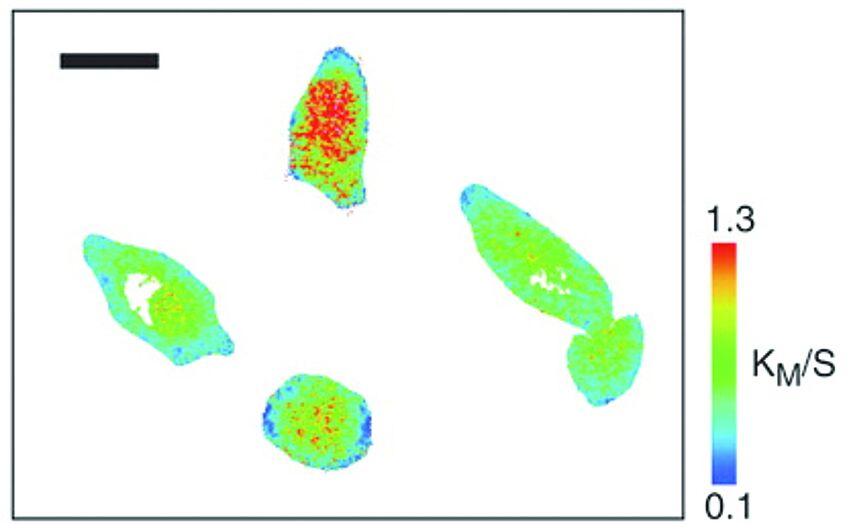Functional imaging of signaling networks
Ivan Yudushkin
Group Leader
ivan.yudushkin@mfpl.ac.at
Phone: +43-1-4277-61655
Campus Vienna Biocenter 5, 1030 Vienna | Room: 1.624


Research
Please visit our new lab website www.yudushkinlab.org
Adaptive character of responses to signals from the environment is a fundamental property of all living organisms. At the cellular level, it is brought about by a highly integrated process of transmembrane and intracellular signal transduction. Although many signaling molecules have been identified, how exactly the dynamics of their interactions ensure the ultimate specificity and adaptive character of cellular responses remains poorly understood. How changes in flux of substrates via an enzyme affects signalling specificity? How intracellular localization of a protein is coupled to its signaling role? What is the function of a given protein in network regulation?
To address these questions, we employ a combination of biochemical and advanced imaging techniques. We are developing tools to visualize the functional state of signaling molecules in live cells to determine how spatial distribution, regulation of specific activity and the corresponding changes in the flux of substrates via individual enzymes determine their signaling function.
Furthermore, to examine the physiological relevance of individual enzymes in signaling, we will be developing new tools to selectively manipulate their localization and activity in live cells.
Protein kinase B, also known as Akt is a central regulator of cellular metabolism, survival and proliferation. It integrates signals from cell surface receptors coupled to PI3 kinase and links them to downstream signalling pathways by phosphorylating multiple (>200) substrates at a conserved motif. When activity of Akt is not properly controlled, this could lead to uncontrolled cell division and enhanced survival, as observed in many human cancers.
Using a combination of imaging, biochemical reporters and in vitro studies with purified Akt, we characterize cellular and molecular mechanisms which restrain Akt activation and control its substrate specificity in cells.
Mechanistic target of rapamycin (mTOR) couples signalling from growth factor receptors with intracellular nutrient-sensing pathways, and thereby is a critical regulator of cellular anabolic functions, growth, survival and proliferation. In eukaryotic cells, mTOR exists in two distinct multisubunit complexes, mTORC1 and mTORC1, which have non-overlapping functions in cellular physiology. Specifically, mTORC2 is implicated in the control of cell proliferation, survival, cytoskeletal rearrangements and, indirectly, in regulation of mTORC1-controlled signalling.
Unlike mTORC1, little is known about localization and regulation of mTORC2. We use combination of superresolution imaging and specifically designed biochemical reporters to examine localization and regulation of mTORC2 activity inside cells.
Publications
Michael Ebner, Iva Lučić, Thomas A. Leonard, and Ivan Yudushkin (2017). PI(3,4,5)P3 Engagement Restricts Akt Activity to
Cellular Membranes MOL CELL;65(3):416-431. PMID: 28157504
Ebner, Michael; Sinkovics, Benjamin; Szczygiel, Magdalena; Ribeiro, Daniela Wolfschoon; Yudushkin, Ivan (2017). Localization of mTORC2 activity inside cells. J CELL BIOL;216(2):343-353. PMID: 28143890
Yudushkin, Ivan A; Vale, Ronald D (2010). Imaging T-cell receptor activation reveals accumulation of tyrosine-phosphorylated CD3? in the endosomal compartment. P NATL ACAD SCI USA;107(51):22128-33. PMID: 21135224
more publications of the group Yudushkin
Collaborations & Funding

FWF standalone project
The group receives funding as the national cooperation partner in FWF standalone project "In vivo protein interaction during cell signaling" (P27254-B22) with Dr Irute Meskiene (UniWien).
